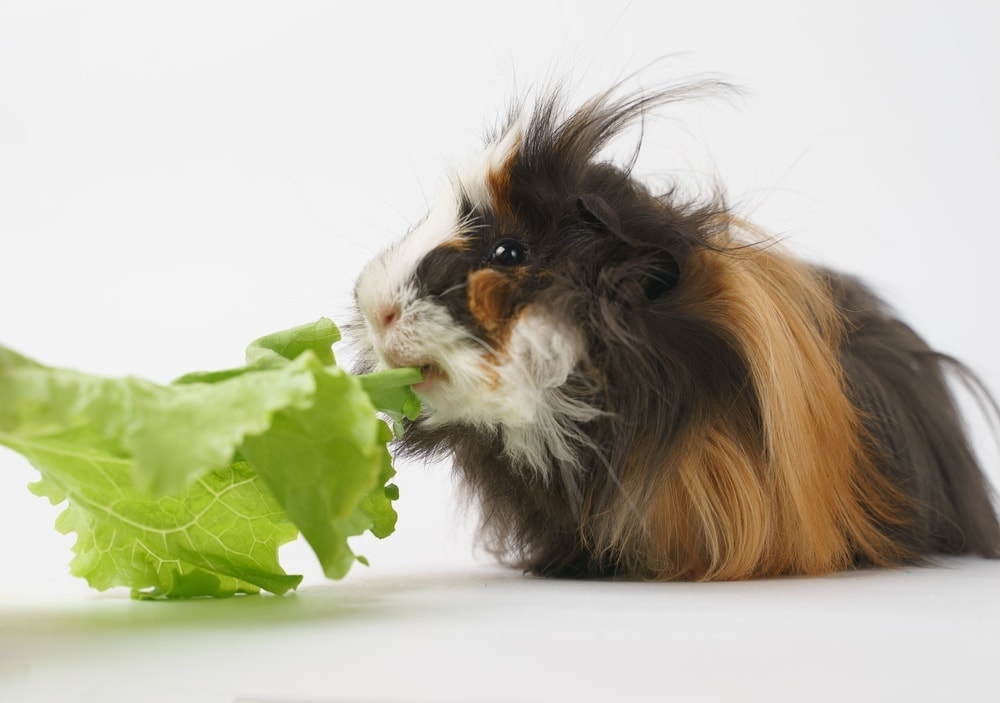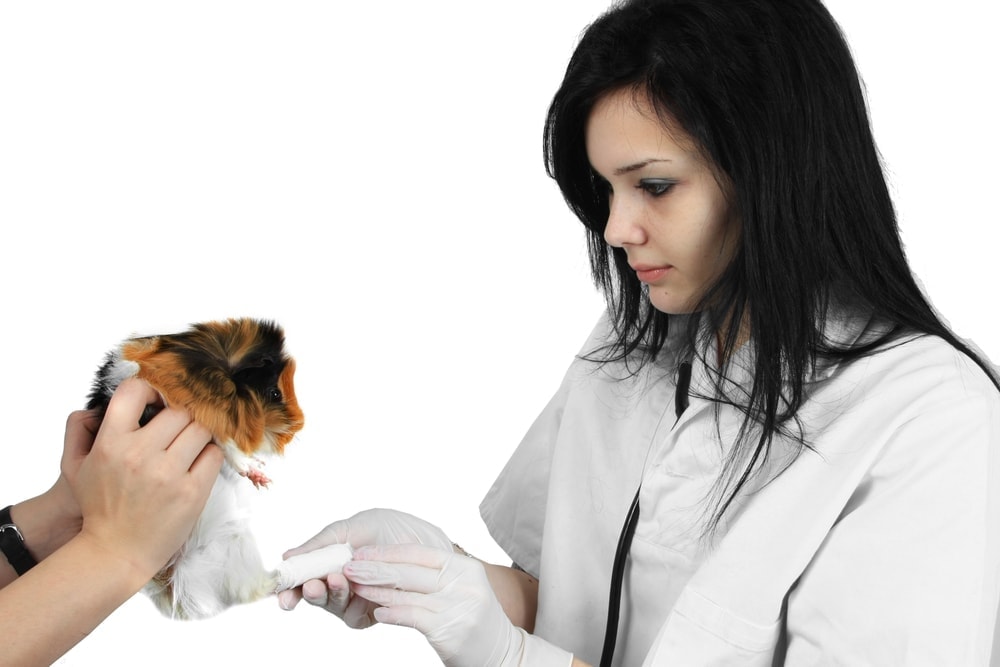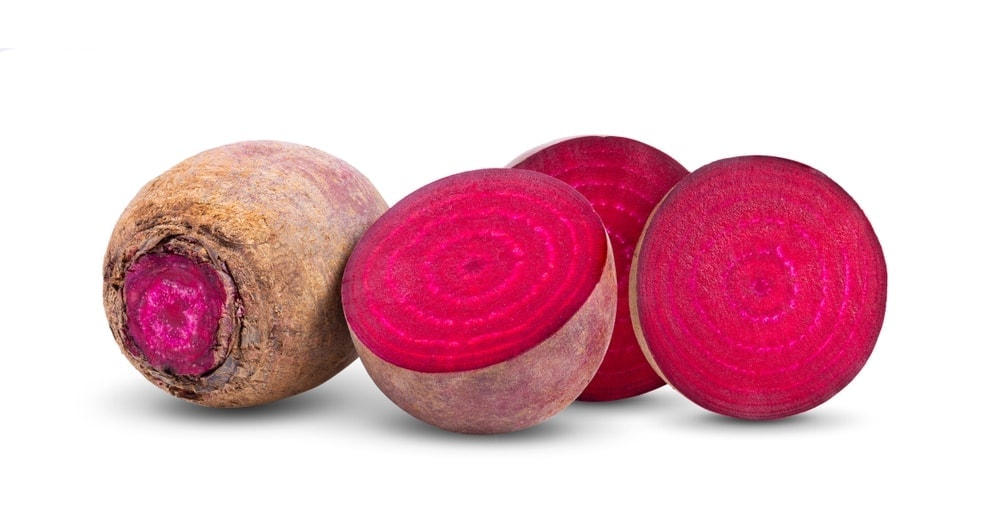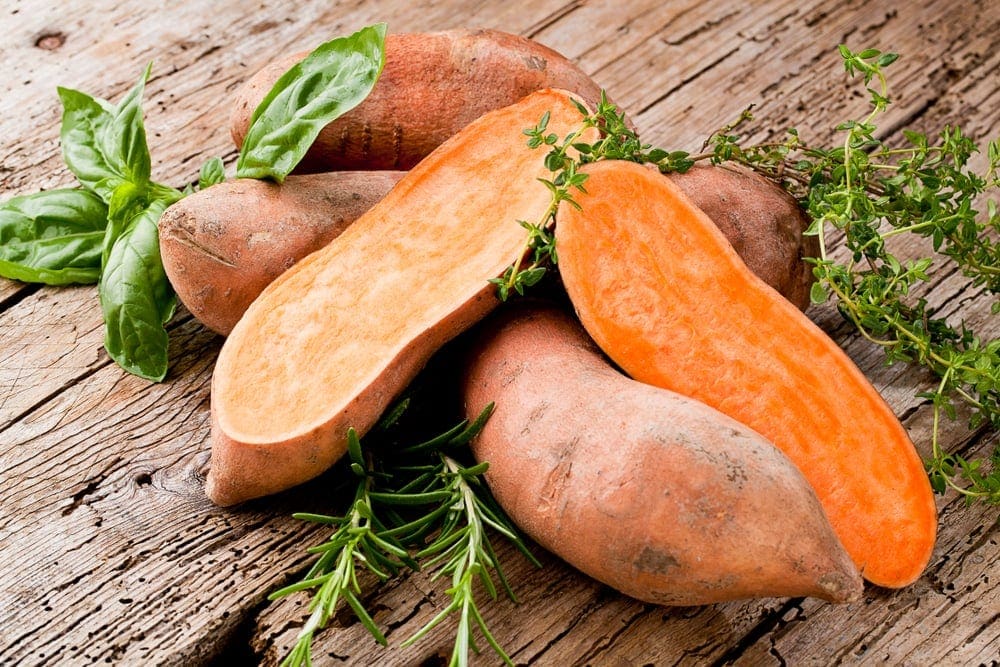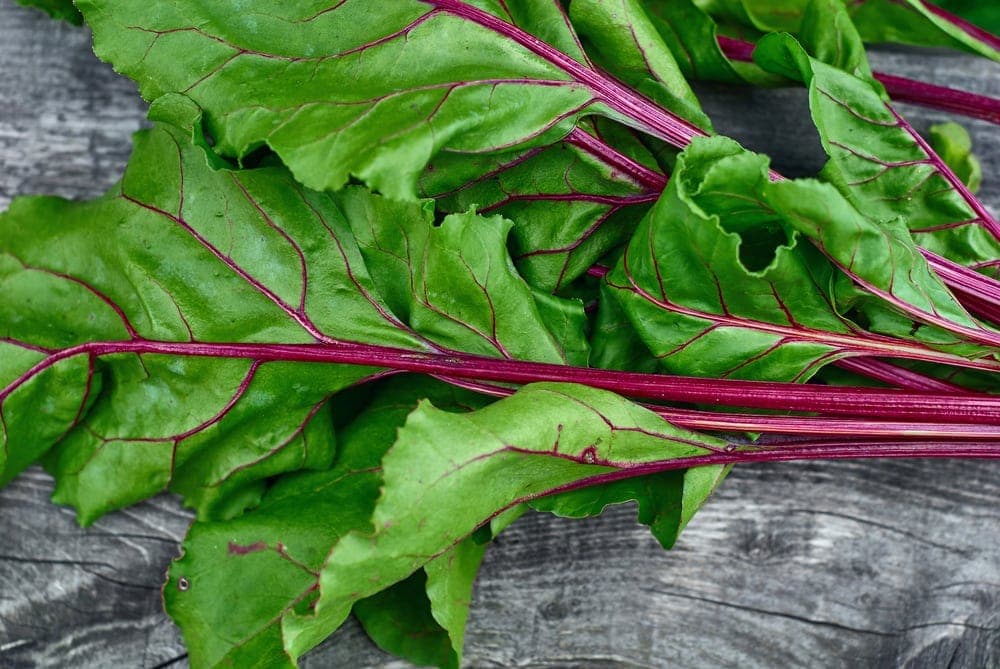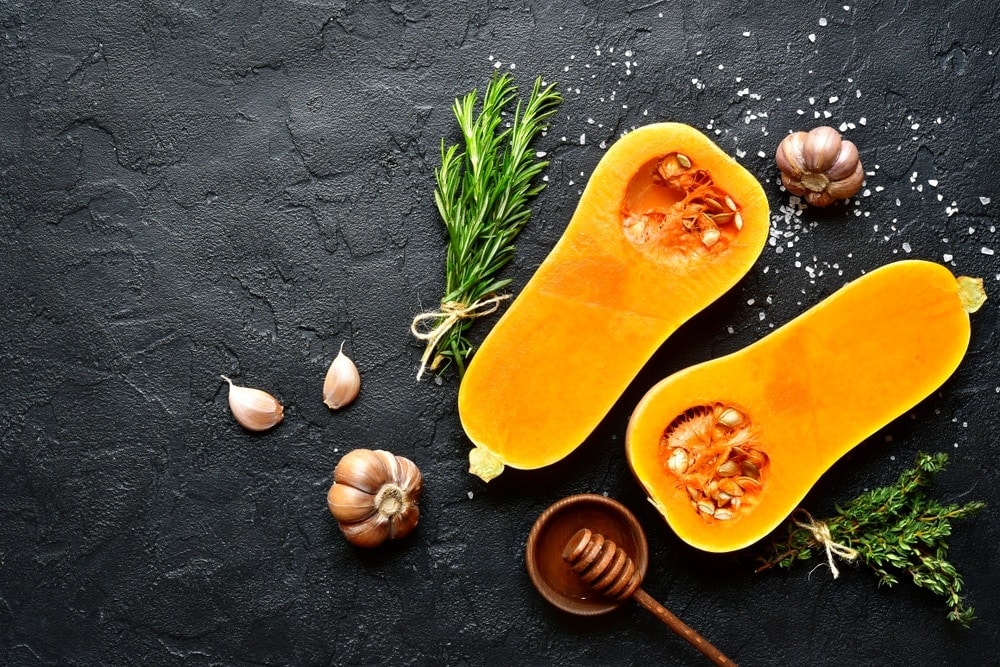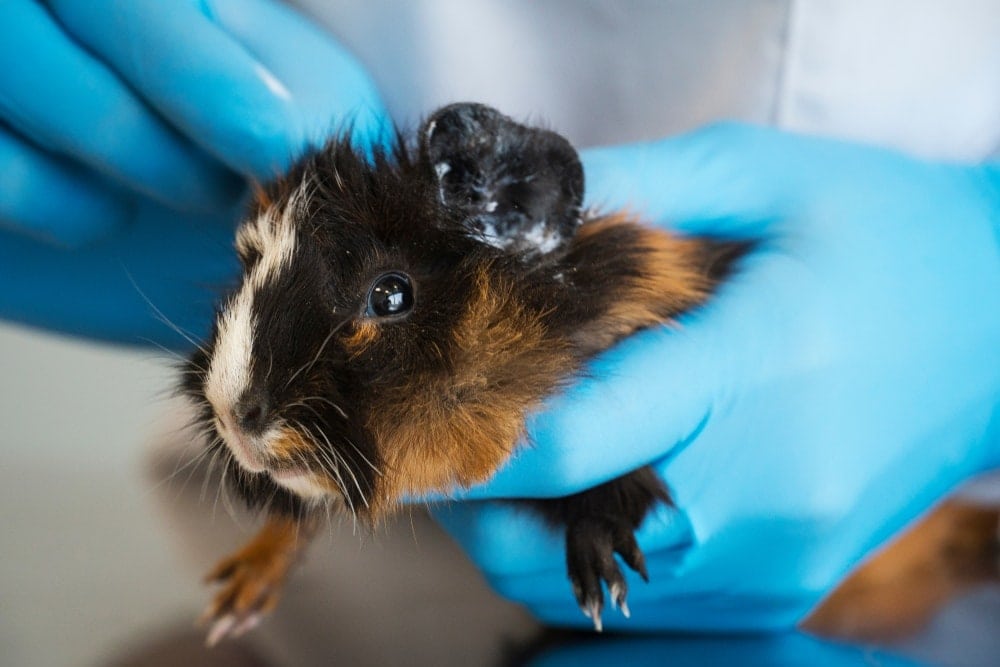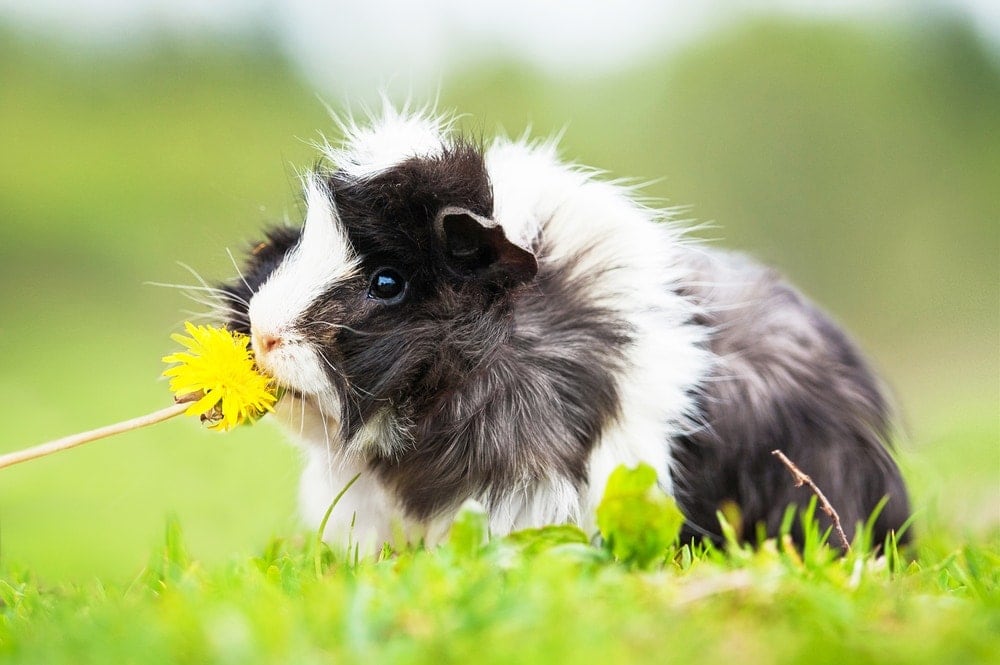In order to stay happy and healthy, guinea pigs need to be fed a wide variety of foods, so that they don’t miss out on any essential vitamins and nutrients that they need.
One of the vegetables that they love to eat is romaine lettuce, which is packed with both crunchiness and essential vitamins and nutrients.
Can Guinea Pigs Eat Romain Lettuce?
Yes, guinea pigs can eat romaine lettuce and all other types of lettuces that are in the lettuce family. The only lettuce that guinea pigs cannot eat is iceberg lettuce, and that is because the nutritional value in iceberg lettuce is so low, that it is more nutritious to eat hay. Because of the crispy and cold nature of lettuce, it tends to be a favorite snack of guinea pigs.
The Components of a Proper Diet
For a guinea pig to live a long life and stay healthy and fit, their owners must provide a diet full of different vegetables and fruits, and a lot of hay. Although the owner of guinea pigs can switch up the different foods they are given, they must strictly adhere to the percentages of their diet. If you try to increase or decrease any of the fruits, vegetables, and hay, the guinea pigs’ health will be seriously jeopardized.
1. Hay
Hay is an important component of a guinea pig’s diet, as it is most of its fiber and a lot of calories. Hay should take up about 80% of the food that goes through a guinea pig. Owners usually leave a brick of hay in the cage with them so they can nibble on it all day long. When you buy hay for your guinea pig, make sure you buy a high-quality brand that doesn’t use a lot of pesticides when they are growing it.
2. Fruits and Vegetables
Fruits and vegetables, along with pellets, make up the other 20% of a guinea pig’s diet. When you feed a guinea pig a vegetable, make sure to have a good rotation of different vegetables so that the guinea pig did not get bored. Also, you should only feed guinea pigs one cup of vegetables a day. This includes romaine lettuce as well. One cup of vegetables is sufficient to provide your little furball with the nutrition it needs, but it won’t cause a buildup of minerals and vitamins, which can also hurt guinea pig.
Fruits, on the other hand, must be given to them sparingly. They should be considered a snack and not part of a daily routine. Fruits have a lot of sugar, and too much sugar in their diet can cause obesity and heart-related issues. Make sure to give them only a few bites of fruit. Even a slice of apple is too much fruit.
3. Pellets
Pellets contain essential amino acids and fats that guinea pigs cannot produce in their own body. But since they have a lot of fat, you shouldn’t give them too many pellets. Guinea pigs only need two tablespoons of pellets per day.
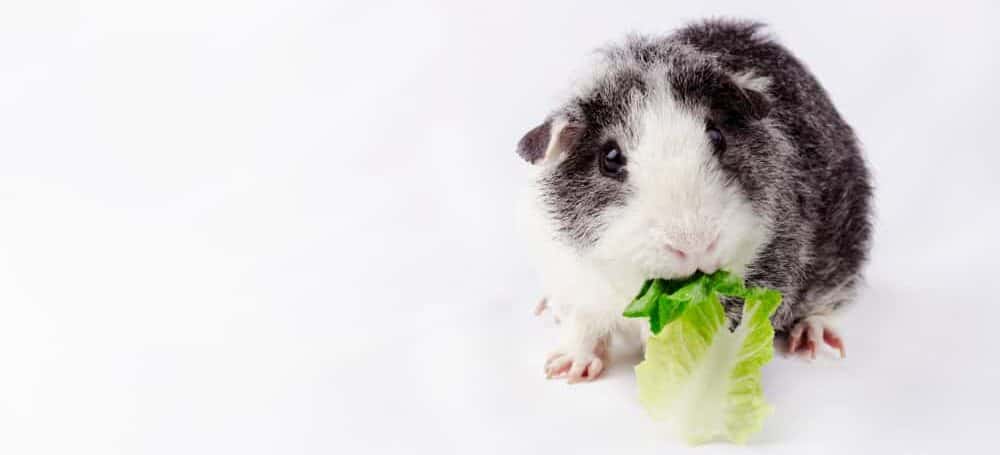
The Nutrition of Romain Lettuce
Although people don’t think of lettuce when they think of nutritious foods, romaine lettuce is packed with nutrients and vitamins that guinea pigs need.
1. Vitamin C
Romaine lettuce has a lot of vitamin C. Also, the darker the leaves are, the more vitamins they have. Vitamin C helps maintain and build up a healthy immune system, so guinea pigs don’t get sick often.
2. Fiber
The fiber from the lettuce pushes out the old fecal matter and keeps the bowels clean. Fiber also increases satiety, which means that guinea pigs get fuller faster and don’t load themselves up with excessive calories.
3. Vitamin A
The vitamin A in the romaine lettuce helps guinea pigs maintain their eyesight for both daytime and nighttime. Also, vitamin A contributes to a healthier heart.
4. Antioxidants
To protect against environmental damage, like smog, dander, overexposure to sunshine can cause a guinea pig’s body to break down faster than it should, even with a great diet. But romaine lettuce has a lot of antioxidants that fight against environmental damage.
What Else Should I Know About Romaine Lettuce?
It may surprise you to hear that romaine lettuce contains a mild sedative in its leaves. Guinea pigs are susceptible to this compound, and you might see your tiny roommate fall asleep after a few minutes of eating romaine lettuce. While the sedative is not harmful, you should not feed romaine lettuce to guinea pigs on a regular basis. To reduce the chance of the sedative in the romaine lettuce sedating and putting your guinea pig to sleep, do not feed them a full 1 cup a recommended vegetable. It should be more like half a cup or 1/4 of a cup.
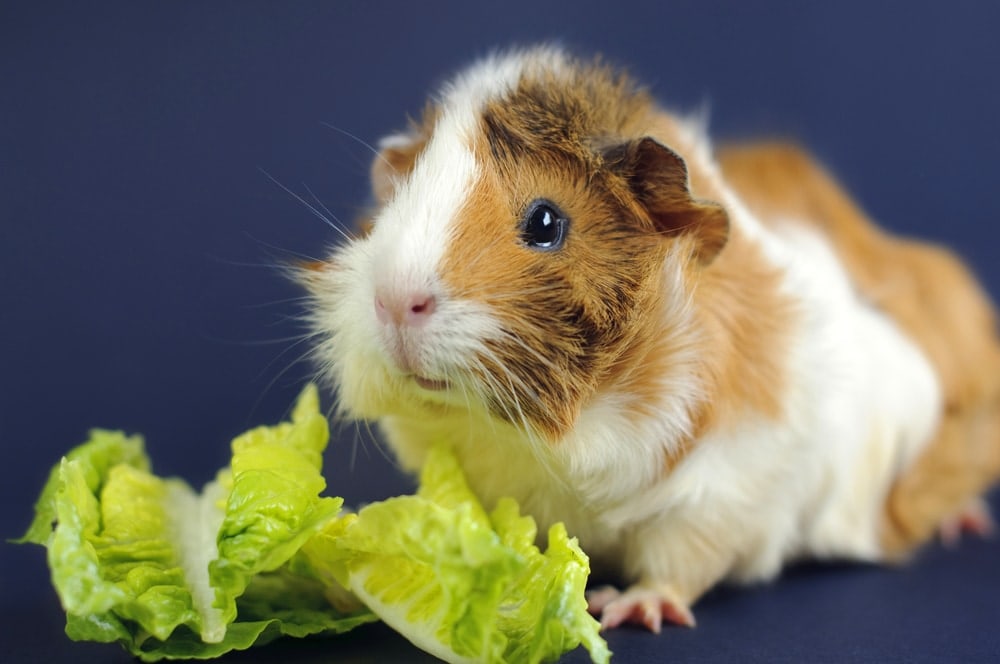
What if Guinea Pigs Eat a Lot of Romaine Lettuce?
Along with being sedated by the compound in the romaine lettuce, too much romaine lettuce can cause a guinea pig to develop kidney or bladder stones. These diseases are caused by too much vitamin C. They might also develop bladder sludge, which is when the urine in the bladder becomes thick, and it becomes difficult to pee.
Vegetables that Guinea Pigs Are Able and Unable to Eat
There are many vegetables that guinea pigs can dine on. Because of this wide range of vegetables, they should never get tired of eating them. Vegetables that guinea pigs can eat are:
- Asparagus
- Cucumber
- Parsley
- Sprouts
- Tomatoes
- Corn
- Broccoli
- Carrots
- And red peppers
But not every vegetable can be eaten by guinea pigs. Some are toxic, some have too little vitamins and minerals, and some vegetables cause a lot of intestinal distress and pain. The vegetables that shouldn’t be eaten by guinea pigs are;
- Iceberg lettuce
- Cabbage
- Cauliflower
- Garlic
- Beans
- Rhubarb
- Tomato leaves
- Seeds
- Onions
- And chives
Conclusion
- Guinea pigs can eat lettuce, and it is also one of their favorite foods to snack on.
- Romaine lettuce has a compound that acts as a mild sedative to guinea pigs.
- Because of this compound, guinea pigs should not eat a full cup of romaine lettuce.
- Romaine lettuce is full of vitamins like antioxidants, vitamin C, fiber, and vitamin A
- Too much calcium in a guinea pig’s diet can cause kidney or bladder stones.
